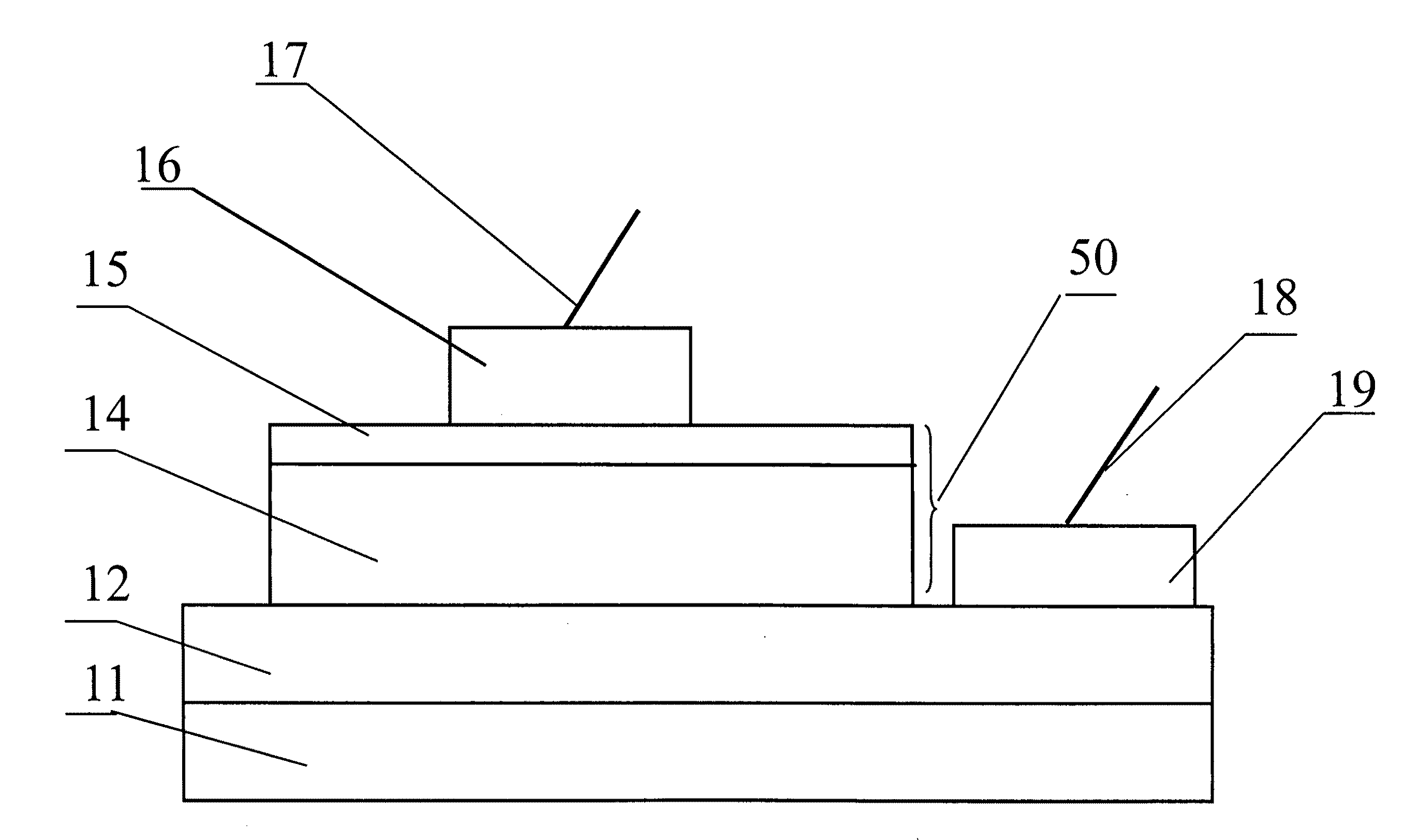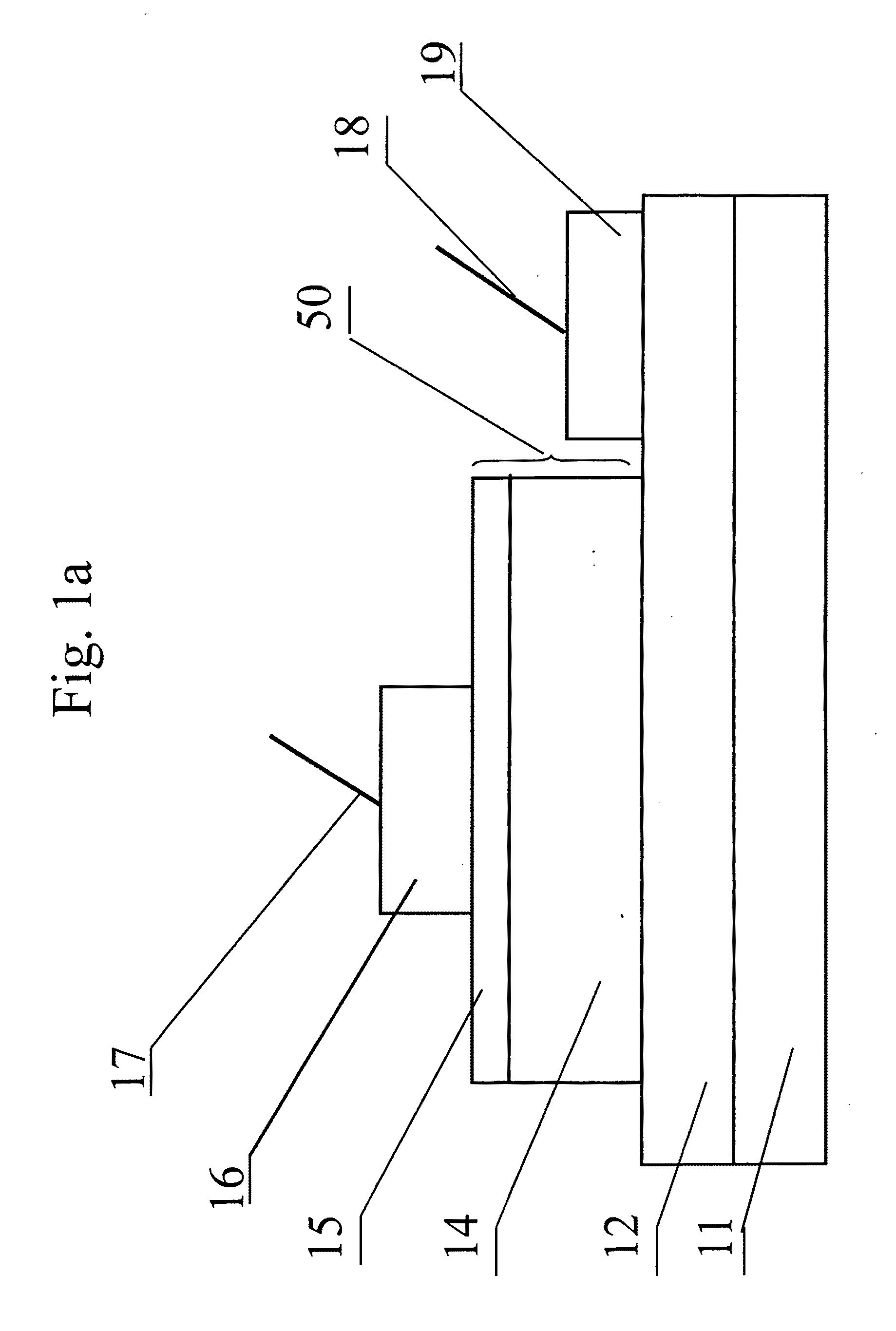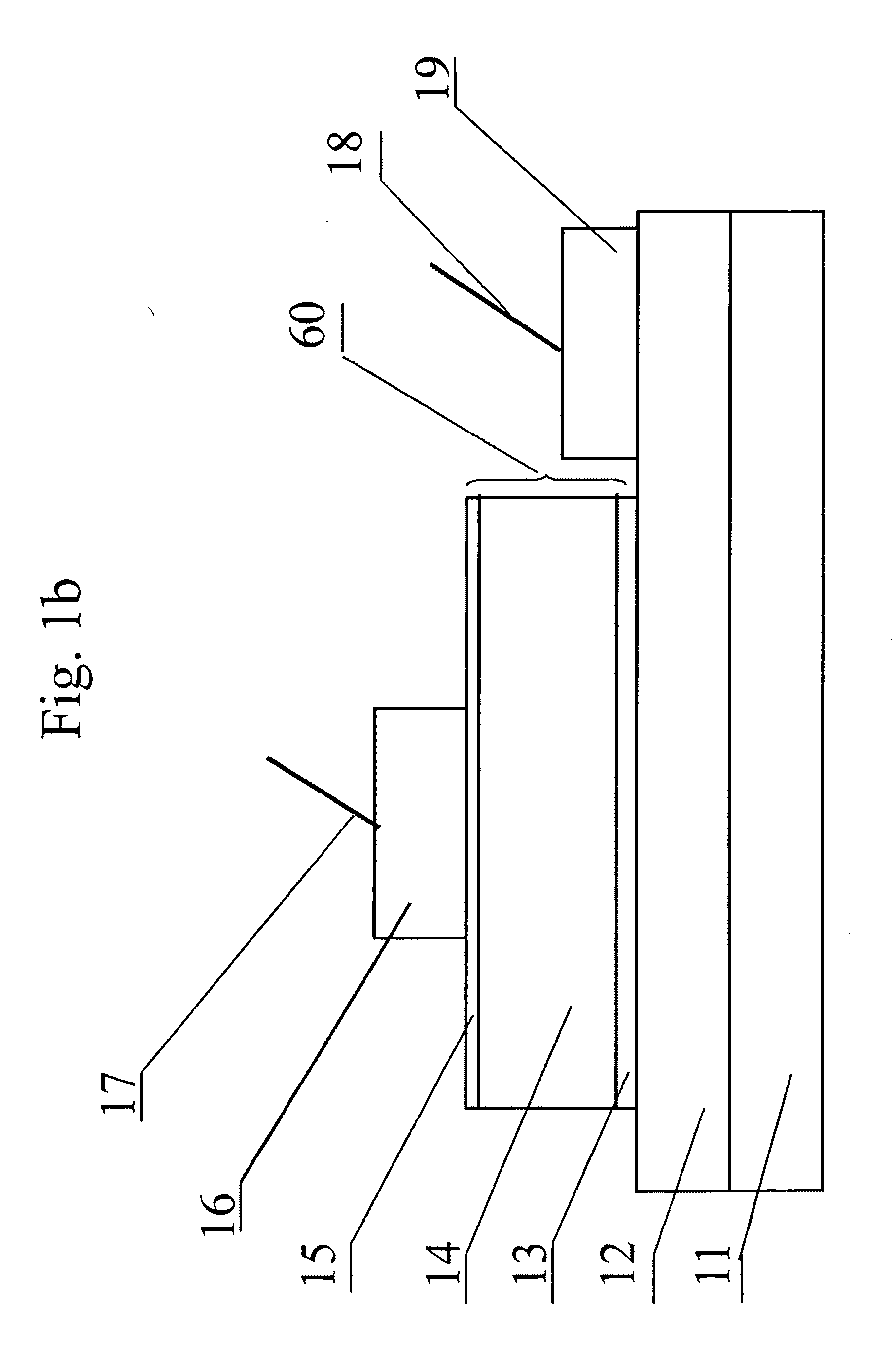Method of using a buffered electric pulse induced resistance device
a resistance device and buffer technology, applied in resistor details, digital storage, instruments, etc., can solve the problem that the electric field or pulsed current through the sample cannot create a high enough magnetic induction, and achieve the effect of reducing the pulse voltage needed to switch the device, increasing the asymmetric configuration and magnifying the resistance switching region, and protecting the device from being damaged
- Summary
- Abstract
- Description
- Claims
- Application Information
AI Technical Summary
Benefits of technology
Problems solved by technology
Method used
Image
Examples
Embodiment Construction
[0022]In summary, buffer layers are added to an EPIR device to create a buffered-EPIR device. Referring to FIG. 1a, a bottom conductive electrode layer 12 is used as the bottom electrode layer on substrate 11. A thin top switchable function film, or layer, 14 partially covers the bottom conductive electrode layer 12. A bottom electrode contact pad 19 is connected to the bottom conductive electrode layer 12. The top switchable function layer 14 is covered with a top buffer layer 15. The top switchable function layer 14 and top buffer layer 15 form a multi-layer structure 50. A top electrode contact pad 16 is fabricated on top of the top buffer layer 15. Electrode contact pads 16 and 19 are connected to wires 17 and 18, respectively. The conductive electrode layer 12 and the top electrode contact pad 16 may be crystalline or polycrystalline conducting oxide or metallic layers.
[0023]Referring to FIG. 1b, the individual components and their arrangements in the buffered-EPIR device with ...
PUM
 Login to View More
Login to View More Abstract
Description
Claims
Application Information
 Login to View More
Login to View More - R&D
- Intellectual Property
- Life Sciences
- Materials
- Tech Scout
- Unparalleled Data Quality
- Higher Quality Content
- 60% Fewer Hallucinations
Browse by: Latest US Patents, China's latest patents, Technical Efficacy Thesaurus, Application Domain, Technology Topic, Popular Technical Reports.
© 2025 PatSnap. All rights reserved.Legal|Privacy policy|Modern Slavery Act Transparency Statement|Sitemap|About US| Contact US: help@patsnap.com



